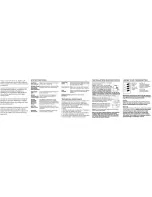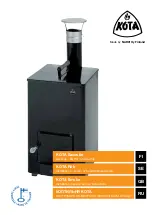
VESDA-E VEP-A00-P Product Guide
www.xtralis.com
15
3
Pipe Network Design and Installation
The Pipe Network should be designed by trained personnel, and verified using the ASPIRE software.
3.1
Design Considerations
The following points should be considered when designing a pipe network for the VEP-A00 detector:
Single Pipe System
Multi Pipe System
Minimum
Recommended
Minimum
Recommended
Pipe Flow
20 l/min
25 l/min
20 l/min
25 l/min
Total Flow
40 l/min
50 l/min
Note:
If required, adjust the aspirator speed to achieve the specified flow rate stated above.
Note:
Avoid using exhaust pipes unless there is a substantial pressure differential between the detector and
the area being sampled by the pipe network. In this case the exhaust pipe needs to go back to the sampled
area. Refer to Section 3.4. for further information.
Refer to the VESDA Pipe Network Design Guide for best design practices.
3.2
Installation Considerations
The following points should be considered when installing sampling pipe:
l
Minimize flexing in sampling pipes by supporting the pipe every 1.5m (5ft) or less, or at a distance
described in local codes and standards.
l
Evenly arrange the sampling pipe network over return air grilles.
l
The sampling pipe fits firmly into the tapered detector port, DO NOT glue this connection.
l
Allow sufficient movement at the detector to permit pipe removal for maintenance.
l
Keep the exhaust pipe as short as possible to minimize airflow resistance in the pipe.
l
Pipe ends must be made smooth for bonding.
l
Sampling holes must be drilled in line and perpendicular to the pipe.
l
Sampling holes must be clear of rough edges and debris.
l
Pipes are free of debris.
l
All joints must be bonded except the end caps and pipes entering the detector.
Notes:
l
Sampling holes should be angled between 30° and 45° into the direction of airflow, or point downwards in
static airflow situations.
l
Keep the sampling holes evenly spaced.
l
For code-specific information, see Codes and Standards Information for Air Sampling Smoke Detection
on page iii.
Refer to the VESDA Pipe Network Installation Guide for best installation practices.
3.3
Pipe Inlets
The air inlet ports in the pipe inlet manifold are tapered such that they accommodate both 25 mm OD pipe or
IPS 3/4 inch pipe (1.05 inch OD).
Each air inlet port allows maximum insertion of the sampling pipe to a depth of 23mm for 25 mm OD pipe or
11.5mm for IPS 3/4 inch pipe (1.05 inch OD). While connecting the detector to the pipe network:
l
Ensure a minimum length of 500 mm (20 in) of straight pipe before terminating the pipes at the air inlet
ports of the detector.
l
Square off and de-burr the end of the sampling air pipes, ensuring the pipes are free from debris.
l
Determine the pipe inlet ports to be used. Refer to Table 3-1 below for details.
l
Remove the plugs from only those pipe inlet ports intended for use. To remove the plug, place a large
screwdriver in the large slot and twist, or use a small screwdriver in the side slots to lever the plug out.
l
Insert the pipes into the pipe inlet(s) ensuring a firm fit.
Содержание VESDA-E VEP-A00
Страница 2: ......
Страница 8: ...VESDA E VEP A00 P Product Guide vi www xtralis com This page is intentionally left blank ...
Страница 10: ...VESDA E VEP A00 P Product Guide 2 www xtralis com A 4 Air Sampling Test Results 93 B Glossary 95 Index 97 ...
Страница 12: ...VESDA E VEP A00 P Product Guide 4 www xtralis com This page is intentionally left blank ...
Страница 22: ...VESDA E VEP A00 P Product Guide 14 www xtralis com This page is intentionally left blank ...
Страница 94: ...VESDA E VEP A00 P Product Guide 86 www xtralis com 1 2 3 Figure 7 21 Undo Sampling Module screws ...
Страница 102: ...VESDA E VEP A00 P Product Guide 94 www xtralis com This page is intentionally left blank ...
Страница 108: ...VESDA E VEP A00 P Product Guide 100 www xtralis com This page is intentionally left blank ...
















































